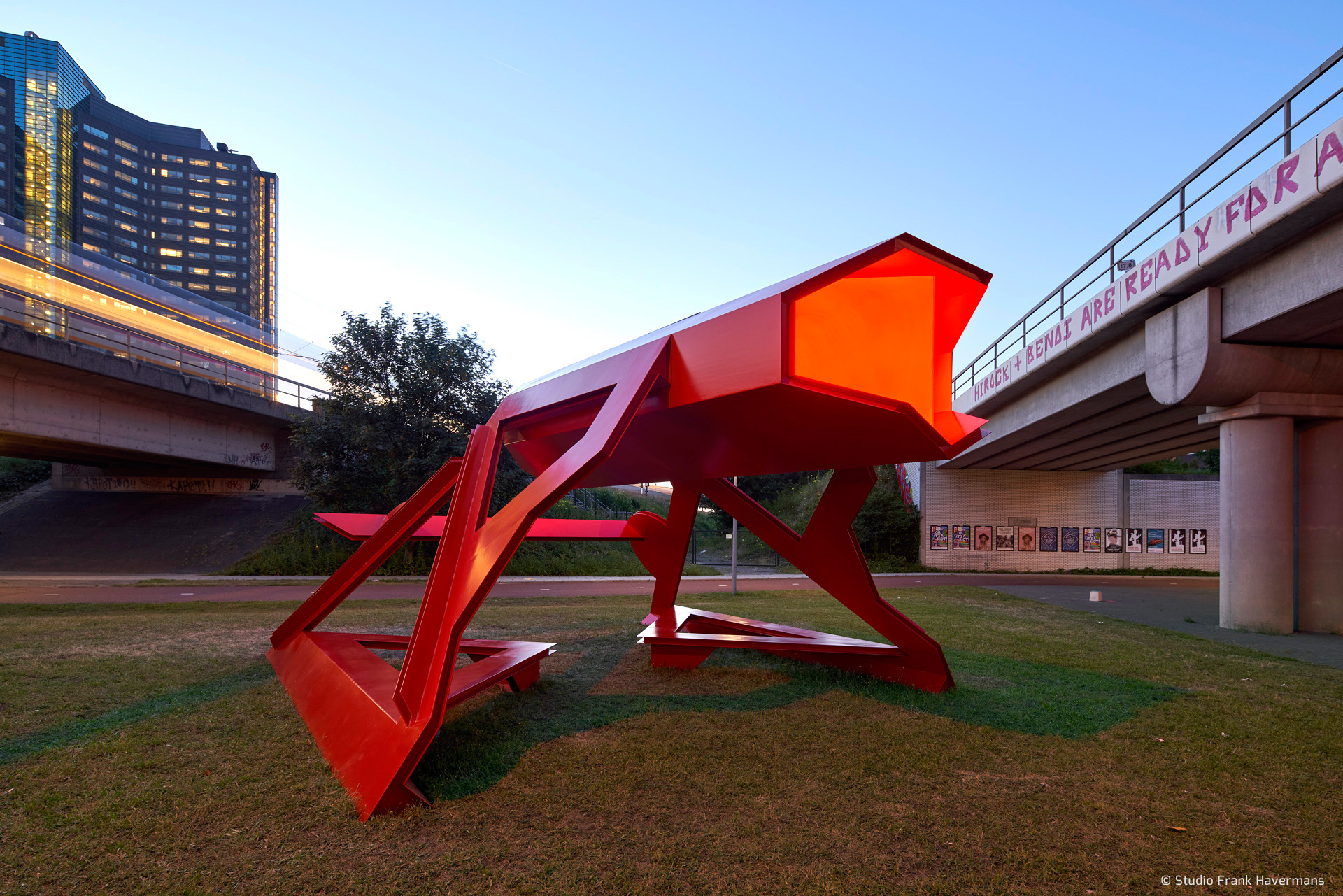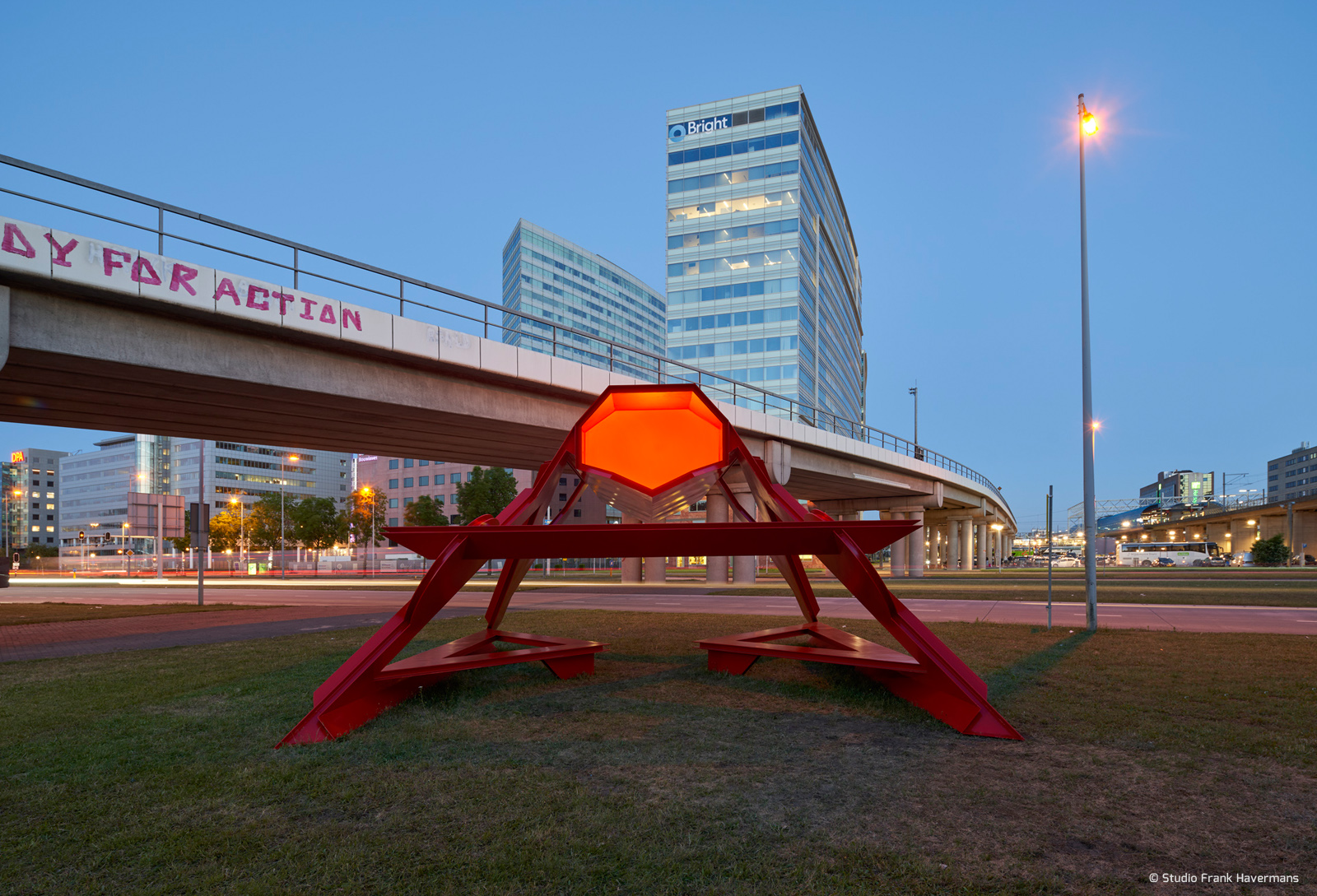KAPKAR / GTO-B10
Urban Surveyor
KAPKAR / GTO-B10 is looking for new places within the urban fabric that could be of importance in the development of the city. It unfolds evolutionally from the second dimension to the third, from one of the first buildings in the area, the APG building. From a basis in this direct relationship, it seeks space in the area in a strategic location between the tracks. The installation nestles there and is a place to reflect on the city and the infrastructure of the future. It has a signal function to embrace and emphasize this dynamic of the city, instead of wanting to hide it as so often happens.
The work builds in a moment of peace to experience this consciously. Now the place seems desolate, but once the work is there, it will change instantly.
KAPKAR / GTO-B10 is an urban surveyor, strategically placed on Basisweg in the middle of a residual area between the arterial roads, elevated train tracks and cycle paths in the vicinity of Sloterdijk Station, Amsterdam’s second largest international hub.
year: 2019
location: Amsterdam, The Netherlands
exhibition: Play Station Sloterdijk, 28 June – 3 November 2019
orginization: Get Lost Artprojects
curator: Bonnie Dumanaw
commissioned by: Edge Technologies, APG, ABP, City of Amsterdam, Amsterdams Fonds voor de Kunsten
collection: City of Amsterdam
welding: Helldorfer lasbedrijf Arnhem
light: Koos Schaart, Velp
technical drawings: Denis Bacal, Den Haag
constructive engineering: Henk Semplonius, Laag-Soeren
© photography Rene de Wit, Mariska Pot (with visitors)
PUBLICATIONS

© Architecten Cie
The shape unfolds from the second to the third dimension from the floor plan of the first office building in the Western port area, the APG building, formerly the SFB-ebouw (Social Fund Construction Industry) designed by Arnold Oyevaar.
The building has since become cultural heritage. As inconspicuous as the building appears on the ground, the ring-shaped plan immediately catches the eye from the air. Because modernist objectivity is rarely broken, this structuralist structure stands out enormously. The distance between the building and the artwork is approximately 200 meters.
Although the current public space is in fact a gray traffic junction, the hard and dynamic infrastructural character of this urban landscape has its own charm. This ambiguous character of Sloterdijk is the second guiding principle for the design. The observation post is an intermediary in this phase of urbanization. KAPKAR / GTO-B10 is looking for new places within the urban fabric that could be of importance in the development of the city in the future.
This place, which is virtually worthless between the noisy and polluted infrastructure, will acquire new meaning if the direction of cleaner and quieter traffic can make it habitable. Changing noisy and smelly infrastructure offers opportunities to apply urban interventions at a micro level, at a different scale level. KAPKAR / GTO-B10 is taking a first step in this direction.
From a base in the direct relationship to the APG main building, it is looking for space in the area at a strategic location between the train tracks. The urban explorer and observation post is a place to reflect, to absorb the urban dynamics and to reflect on the infrastructure of the future. It literally marks a place that is now unusable for urban development, it gives a signal function to embrace and emphasize this dynamism of the city instead of trying to hide it as so often happens.
The work is a way of consciously experiencing this and has immediately changed the location. People stop and wonder what landed here and use the place. At the same time, they experience the rugged, loud infrastructure of which they are normally part of as a commuter.


